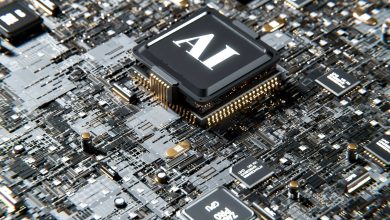A significant transformation is underway in the world of educational technology. The initial wave of AI tools dazzled us with their ability to generate instant answers and streamline workflows, but they also introduced a subtle danger: cognitive dependency. Students began treating these sophisticated models as digital crutches, bypassing the difficult but necessary friction of critical thinking. Now, however, a new paradigm is emerging to reverse this trend.
We are entering the era of Socratic AI – intelligent systems designed not to simply deliver information, but to master the art of inquiry itself.
Why “Answer Machines” Fail
The allure of early educational AI was its efficiency. If you needed a historical date or the solution to a calculus problem, the AI provided it instantly. This “reactive” model transformed AI into a highly efficient oracle – excellent for retrieving data, but pedagogically hollow.
In my experience developing personalized learning tools for complex creative apps, I have seen the pitfalls of this dynamic firsthand. When guidance is too direct, learners rely on the system rather than their own judgment. The true challenge isn’t providing the correct answer; it is fostering the “cognitive muscles” required to solve novel problems without assistance.
Educators are now seeing the consequences of this “answer machine” approach. Students can retrieve solutions in seconds but often lack the ability to synthesize, evaluate, or critique that information. The very skills that constitute deep learning – questioning premises, spotting contradictions, and constructing mental models – are being eroded by tools designed to remove cognitive effort.
The Socratic Solution: From Retrieval to Dialogue
The antidote to this dependency is one of our oldest pedagogical techniques: the Socratic method. Instead of dispensing facts, Socratic AI engages the learner in a structured dialogue. It probes existing knowledge, challenges underlying assumptions, and guides the student toward their own “aha!” moments.
This shift is already becoming a key differentiator for top-tier educational platforms. Khan Academy’s Khanmigo, for instance, was built on this exact principle, programmed to withhold direct answers in favor of guiding questions. Similarly, Open AI’s “Study Mode” slows the interaction loop, prioritizing assessment and understanding over speed. Research validates this approach, showing that Socratic dialogue is far more effective at building durable critical thinking skills than passive consumption.
Architecting True Dialogue
Building a functional Socratic AI is far more complex than simply wrapping a prompt around a Large Language Model. It requires a sophisticated technical architecture capable of juggling multiple cognitive tasks at once:
- Contextual Awareness: The system must track the entire conversation thread, understanding not just the current query, but the broader learning objective.
- Mental Modeling: The AI needs a real-time model of the student’s mind – what they know, what they think they know, and where their logic might be flawed.
- Calibration: Perhaps the hardest task is generating the optimal question – one that is challenging enough to provoke thought, but not so difficult that it causes frustration.
- Intervention Timing: The system must determine when to offer a nudge, when to ask a probing follow-up, and when to step back and let the learner struggle productively.
This complexity creates a “pedagogical moat.” While building a basic chatbot is now trivial, engineering a system that can conduct meaningful educational dialogue requires deep expertise in both AI architecture and learning science.
AI with Memory
A transformative feature of this new generation of AI is persistent memory. Unlike generic tools that reset with every session, advanced Socratic AI remembers previous interactions, turning the system from a utility into a partner.
In my current work on proactive tutoring systems, I’ve found that memory is the “secret sauce” of personalization. If an AI remembers that a student mastered factoring last week, it can explicitly link that concept to today’s lesson on quadratic functions. This continuity makes learning feel coherent and progressive rather than fragmented.
Furthermore, this memory enables “proactive guidance.” Instead of waiting for a student to ask for help, the system can steer the learning process based on a historical understanding of that student’s specific strengths and weaknesses. It marks the evolution from a reactive helpdesk to a proactive mentor.
The Competitive Edge and Future Outlook
As basic generative AI becomes a commodity accessible via cheap APIs, EdTech companies face a binary choice: compete on price or differentiate through pedagogy.
Socratic AI offers a powerful path to differentiation. Companies that master this are not just selling better code; they are selling better teaching. This narrative resonates deeply with parents, educators, and investors who recognize that the goal of education is cognitive development, not just knowledge transfer.
Looking ahead, the Socratic model is just the first step toward “Proactive AI” – systems that anticipate learning needs before they arise. These future tutors will identify conceptual gaps before they become roadblocks and surface connections before a student gets stuck.
Ultimately, the rise of Socratic AI is a response to the demands of an AI-saturated world. In an era where information is infinite and cheap, the ability to discern, question, and analyze is the only metric that matters. By moving from passive consumption to active inquiry, we aren’t just building better educational tools – we are shaping independent thinkers capable of navigating the future.





